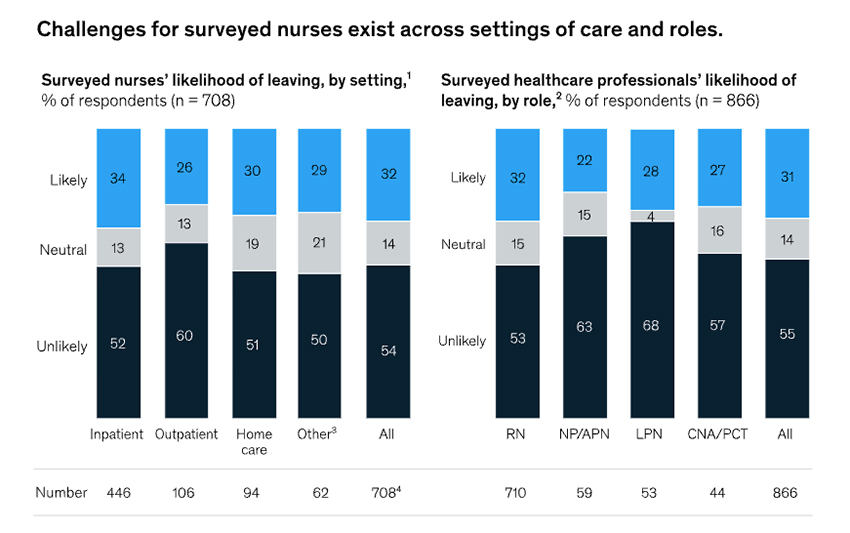Quick note, nurses, in this case, refers to registered nurses (RNs), advanced practice nurses (nurse practitioners), as well as licensed professional nurses (LPNs) and certified nurses aides (CNAs), and patient care technicians (PCTs) – a very heterogeneous mix.

If you look at those reasons, there is some overlap to notice. Insufficient staffing levels, not being supported at work, physical and emotional toll and the demanding nature of the work are all entangled, contributing 52% of the reasons. We might also combine lack of respect, seeking higher-paid positions, and lack of career prospects – which adds 21% more. The data is more telling when broken out by the nursing role and site of care.
 The most discontent, RNs and those working in inpatient roles. Nurse practitioners are already getting paid more than RNs and have roles less influenced by staffing levels and being unsupported in their work. LPNs, CNAs and PCT all provide face-to-face labor, with lower salaries – but there is a definite ceiling on the wages and prospects of that worker “caste.”
The most discontent, RNs and those working in inpatient roles. Nurse practitioners are already getting paid more than RNs and have roles less influenced by staffing levels and being unsupported in their work. LPNs, CNAs and PCT all provide face-to-face labor, with lower salaries – but there is a definite ceiling on the wages and prospects of that worker “caste.”
Healthcare has a tremendous emotional and physical toll; I have felt for a long time that healing, in many ways, is the transfer of my energy and good health to my patients. The last two years have accelerated that transfer, and the energy reservoir of healthcare professionals is dangerously low. It is one of the unintended consequences of “my body, my choice” when it comes to not being vaccinated for an infectious disease that puts unnecessary stress on an already stressful occupation.
Source: McKinsey and Co, Surveyed nurses consider leaving direct patient care at elevated rates




